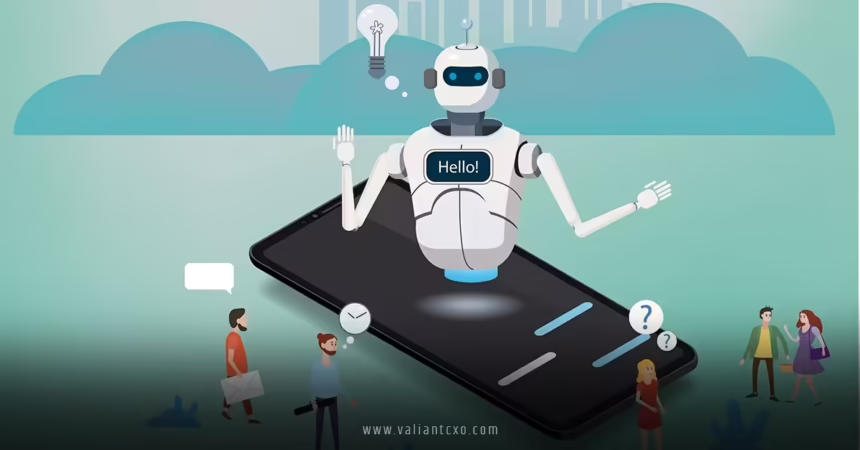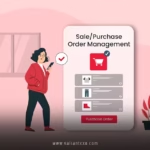Automating customer service with AI chatbots is no longer a futuristic dream—it’s a reality transforming how businesses connect with their customers. Imagine a tireless assistant who answers questions, resolves issues, and chats with customers around the clock, all while learning to do it better every day. That’s the magic of AI chatbots! In this article, we’ll dive deep into why automating customer service with AI chatbots is a game-changer, how it works, its benefits, challenges, and practical steps to get started. Whether you’re a small business owner or running a global enterprise, this guide will show you why embracing this technology is like giving your customer service team superpowers.
What Are AI Chatbots, and Why Are They a Big Deal?
Picture this: a customer lands on your website at 2 a.m. with a burning question. Instead of waiting for business hours, they’re greeted by a friendly, intelligent chatbot that answers instantly. AI chatbots are software programs powered by artificial intelligence, designed to simulate human conversation. Unlike traditional rule-based bots that follow rigid scripts, AI chatbots use natural language processing (NLP) to understand and respond to complex queries in a human-like way.
Why does automating customer service with AI chatbots matter? For starters, customers expect instant responses. A study by HubSpot found that 90% of customers rate an immediate response as important when they have a question. AI chatbots deliver that speed while reducing the workload on human agents. They’re like the ultimate multitaskers, handling everything from simple FAQs to guiding users through troubleshooting steps, all without breaking a sweat.
How AI Chatbots Work: The Brains Behind the Bot
At their core, AI chatbots rely on a mix of machine learning, NLP, and sometimes a dash of personality to engage users. When a customer types a question, the chatbot analyzes the text, identifies intent, and pulls from a knowledge base to craft a relevant response. It’s like having a librarian who instantly finds the right book in a massive library—except the library is your company’s data, and the book is the perfect answer.
Automating customer service with AI chatbots involves training them on your business’s specific needs. For example, an e-commerce store might train its chatbot to handle order tracking, while a bank might focus on account inquiries. Over time, these bots learn from interactions, getting smarter and more accurate. Platforms like Zendesk offer tools to build these intelligent systems, making it easier for businesses to jump on board.
The Benefits of Automating Customer Service with AI Chatbots
Why should you care about automating customer service with AI chatbots? The benefits are hard to ignore, and they go beyond just saving time. Let’s break it down.
1. 24/7 Availability: Never Miss a Customer
Customers don’t stick to your office hours. Whether it’s midnight or a holiday, AI chatbots are always on duty. This round-the-clock availability ensures no query goes unanswered, boosting customer satisfaction. Think of it as having a night-shift team that never sleeps or calls in sick.
2. Cost Savings: More Bang for Your Buck
Hiring human agents is expensive—salaries, training, and benefits add up fast. Automating customer service with AI chatbots can cut costs significantly. A report by Forrester suggests businesses can reduce customer service costs by up to 30% with chatbots. That’s money you can reinvest into growing your business.
3. Scalability: Handle Thousands of Chats at Once
During a product launch or a Black Friday sale, customer inquiries can flood in like a tidal wave. Human teams might drown under the pressure, but AI chatbots thrive. They can handle thousands of conversations simultaneously without slowing down, ensuring every customer gets attention.
4. Personalized Experiences: Make Customers Feel Special
Ever wonder how some companies seem to know exactly what you need? AI chatbots can analyze customer data—like purchase history or preferences—to deliver tailored responses. For instance, a chatbot might suggest products based on past orders, creating a personalized shopping experience that feels like a one-on-one conversation.
5. Data Insights: Your Secret Weapon
Every chat is a goldmine of data. Automating customer service with AI chatbots lets you collect insights on customer behavior, common pain points, and trending questions. This data can guide product development, marketing strategies, and more. It’s like having a crystal ball that shows you what your customers want before they even ask.
Challenges of Automating Customer Service with AI Chatbots
Let’s be real—automating customer service with AI chatbots isn’t all sunshine and rainbows. There are hurdles to overcome, but knowing them upfront helps you plan better.
1. Initial Setup Can Be Tricky
Building a chatbot that truly understands your customers takes time and effort. You’ll need to feed it data, train it on your brand’s tone, and test it thoroughly. It’s like teaching a toddler to talk—patience is key, but the results are worth it.
2. Handling Complex Queries
AI chatbots shine with routine questions, but they can stumble with nuanced or emotional issues. For example, a customer venting about a defective product might need a human’s empathy. The solution? Set up a seamless handoff to human agents when things get tricky.
3. Keeping the Human Touch
Nobody likes talking to a robot that feels, well, robotic. If your chatbot sounds like it’s reading from a script, customers might get frustrated. The trick is to infuse personality into your bot’s responses—think of it as giving your chatbot a bit of charisma to charm your customers.
4. Ongoing Maintenance
AI chatbots aren’t set-it-and-forget-it tools. They need regular updates to stay relevant as your business evolves. New products, policies, or customer trends mean your bot’s knowledge base must keep up. It’s like tuning a car engine to keep it running smoothly.
How to Get Started with Automating Customer Service with AI Chatbots
Ready to dive into automating customer service with AI chatbots? Here’s a step-by-step guide to make it happen without pulling your hair out.
Step 1: Define Your Goals
What do you want your chatbot to do? Answer FAQs, process returns, or guide users through your website? Clear goals help you design a bot that meets your needs. For example, a travel agency might prioritize booking inquiries, while a tech company might focus on troubleshooting.
Step 2: Choose the Right Platform
There are tons of chatbot platforms out there, from beginner-friendly options like Tidio to advanced ones like Dialogflow. Pick one that aligns with your technical skills and budget. Most platforms offer templates to get you started, so you don’t need to be a coding wizard.
Step 3: Train Your Chatbot
Feed your chatbot a steady diet of data—product details, FAQs, and customer interaction logs. The more data it has, the smarter it gets. Think of this as teaching your bot to speak your business’s language fluently.
Step 4: Test and Tweak
Before unleashing your chatbot on the world, test it rigorously. Ask it every question you can think of, from the mundane to the bizarre. Tweak its responses to ensure accuracy and a friendly tone. It’s like rehearsing for a big performance.
Step 5: Launch and Monitor
Once your chatbot is live, keep an eye on its performance. Use analytics to track response accuracy, customer satisfaction, and areas for improvement. Regular check-ins ensure your bot stays at the top of its game.
Best Practices for Automating Customer Service with AI Chatbots
To make your chatbot a superstar, follow these best practices:
- Keep It Conversational: Write responses in a friendly, natural tone. Avoid jargon or overly formal language.
- Offer a Human Option: Always give customers a way to escalate to a human agent if needed.
- Update Regularly: Refresh your bot’s knowledge base to reflect new products, policies, or trends.
- Use Analytics: Monitor chat logs to spot patterns and improve responses over time.
- Test Multilingual Support: If your customers are global, consider chatbots that handle multiple languages.
Real-World Examples of Automating Customer Service with AI Chatbots
Let’s look at some companies nailing it with AI chatbots. Take Domino’s Pizza, for example. Their chatbot, Dom, lets customers order pizza via text or voice, making the process as easy as chatting with a friend. Or consider Sephora, whose chatbot offers beauty tips and product recommendations, creating a virtual shopping assistant that feels personal and engaging.
These examples show how automating customer service with AI chatbots can elevate the customer experience while streamlining operations. It’s like having a team of tireless assistants who never get bored or burned out.
The Future of Automating Customer Service with AI Chatbots
Where is this all headed? The future of automating customer service with AI chatbots is bursting with possibilities. Advances in AI, like better NLP and emotional intelligence, will make chatbots even more human-like. Imagine a bot that not only answers questions but also picks up on a customer’s frustration and responds with empathy. Voice-enabled chatbots are also on the rise, letting customers talk to your business as easily as they’d call a friend.
Integration with other technologies, like augmented reality or IoT, could take things further. Picture a chatbot guiding a customer through a product setup using AR visuals—all in real time. The possibilities are as endless as your imagination.
Conclusion
Automating customer service with AI chatbots is like handing your business a superpower: the ability to deliver fast, personalized, and cost-effective support 24/7. From slashing costs to delighting customers, the benefits are undeniable. Sure, there are challenges—like setup complexity or maintaining a human touch—but with the right strategy, these are easily overcome. By defining clear goals, choosing the right platform, and following best practices, you can create a chatbot that transforms how you connect with customers. So, why wait? Start exploring how automating customer service with AI chatbots can take your business to the next level today!
FAQs
1. What is the main benefit of automating customer service with AI chatbots?
The primary benefit is providing instant, 24/7 support, which boosts customer satisfaction and reduces the workload on human agents.
2. Can AI chatbots handle complex customer queries effectively?
While AI chatbots excel at routine questions, complex or emotional queries may require a human touch. A good system allows seamless handoffs to human agents.
3. How much does it cost to implement automating customer service with AI chatbots?
Costs vary depending on the platform and customization. Basic platforms are affordable for small businesses, while enterprise solutions may require a larger investment.
4. Are AI chatbots suitable for small businesses?
Absolutely! Automating customer service with AI chatbots is scalable, making it ideal for businesses of all sizes, from startups to global brands.
5. How do I ensure my chatbot doesn’t sound robotic?
Use a conversational tone, infuse personality, and regularly update responses to keep interactions natural and engaging.
For More Updates !! :valiantcxo.com


